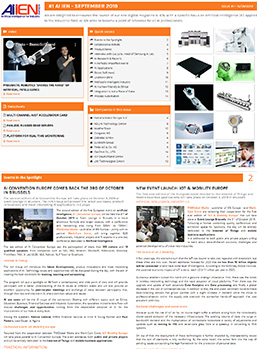Futurism Technologies. Unplanned machine downtime can be a multi-million dollar pain for manufacturers. If the equipment or machine breaks down unexpectedly, manufacturers incur a plethora of costs related to discovery, containment and recovery. In addition, there are costs pertaining to the disruptions in production and supply chain. Implementing a Smart Factory Predictive Maintenance solution can yield an ROI in a matter of months.
In a traditional factory setting, maintenance experts manually combine a cocktail of both qualitative as well as quantitative techniques in an effort to foresee or predict impending equipment breakdown/failures and curb downtime in production. However, predictive maintenance can be automated using IoT, machine learning and AI techniques to optimize maintenance chores in real time, boost the equipment life and health whilst keeping disruptions at bay.
This is where predictive maintenance (PdM) comes into the picture! Predictive maintenance empowers manufacturing companies to maximize the life of their equipment and machines whilst helping them avoid unplanned downtime and curb maintenance costs marginally.
Helping the heart of the machine beat longer
Maintenance experts need to ensure high availability of manufacturing systems and equipment round the year and at the same time, they ought to focus on reducing costs pertaining to maintenance and spare parts. With the inception of Industry 4.0 for the manufacturing sector, maintenance personnel can now leverage new technologies like IIoT, AI, Machine Learning, etc. to monitor as well as receive deeper and intelligent insights into their production operations, units and equipment in real time thus, transforming a typical manufacturing unit into a smart factory aka connected factory. For example, a condition-based predictive maintenance solution for an injection molding machine is great when it comes to monitoring the machine’s critical components or parts for wear and tear.
Just to give an example of how predictive maintenance works, let us have a look at injection molding machines and how the use of IoT sensors can help a manufacturer know when certain parts would wear or fail over time or need replacement. By using sensors integrated with a condition-based predictive maintenance solution, maintenance experts and technicians are alerted when an injection tube is loose or has been removed as well as other mechanisms such as pressure gauges, molds, heat sensors, motherboards, and calibrators just to name a few. This is a lifesaver for any manufacturing company, since a single piece of equipment breakdown can impede the entire production cycle thus, affecting the bottom-line.
Predictive maintenance not only helps avoid such disruptions, but also helps schedule maintenance work before the equipment breaks down completely shutting down operations
The main purpose of predictive maintenance is that it enables corrective maintenance to be performed before the piece of equipment needs to be repaired or replaced. Access to intelligent insights pertaining to a machine’s performance and service history, maintenance work can be planned optimally with the right people and parts ready. This approach helps to eliminate unplanned line stops and reduce stoppage time overall.
However, for this to work, a predictive model for the equipment failure mode(s) must be created. This model can be built with the data collected from actual field installations and theoretical failure models. Further, machine learning algorithms can be applied on large data sets that correlate with the sensor data and actual failure mechanisms to come up with a more refined and powerful predictive maintenance model.
Another fine example is of powder coating machines, especially the ones that run on chains, belts, etc. If one pin breaks in the chain, it will cause it to break or fall off leading to further issues potentially destroying product or damaging the machine as a whole. When dealing with a mass production manufacturing equipment, it is vital to have zero downtime.
Any downtime is going to affect the production schedule leaving customers upset because of delay in delivery
The PdM model is not only suitable for wear parts, but can also support with monitoring of other key components of an injection molding machine. For example, you can have a module for ball screw drives or spindles that can be found at the core of an electrical injection molding machine. These help in converting the axial movements into radial and vice versa. Now as various spindles are in operation in an injection molding machine, and failure of even a single shut down can disrupt the entire production line. A PdM module here can help monitor the screw drives continuously. The module will also analyze temperature and performance data. It will then combine all these data into an intelligent damage indicator algorithm to obtain a predictive report about the condition of spindles.
This is the reason PdM is the stepping-stone for a successful digital transformation journey. For a manufacturing organization, a digital transformation investment directed at PdM would not only help drive the plant’s asset utilization, productivity and efficiency, but would also help yield quick digital ROI whilst helping it reduce downtime significantly.
Futurism offers full-spectrum predictive maintenance capabilities under our smart factory program including solution development, consultation, factory design/build/planning, integration and complete IoT based asset condition management solutions. Whatever it is that you need to help realize your smart factory, Futurism can help.





























